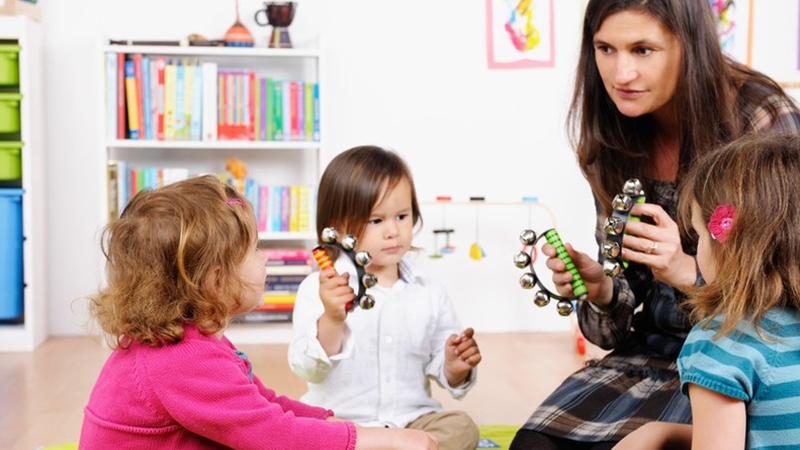The Role of Ritual, Song, and Drama in Religious Education for Preschoolers

Preschoolers learn through play and through acting out abstract concepts in concrete ways. This means that four-year-olds in the faith formation classroom can be engaged in ritual, song, and drama to positively affect student learning outcomes. Including music is helpful for classroom transitions and setting a peaceful tone in the room. Drama brings Bible stories to life in a meaningful way that young children can understand. Here are some strategies for including music, ritual, and drama in lesson plans for three- and four-year-old children.
- Create hand puppets and dioramas for creative expression. For example, create a Bible scene using items such as a shoebox, construction paper, string, felt, crayons, and craft sticks. Include children in the process by asking them to color figures made of paper or helping them glue the felt pieces to the craft sticks. Think about classic stories from the Old Testament (e.g. Moses, Noah, Joseph, Jonah, Daniel, and Joshua) and the New Testament (e.g. the Nativity, the Miracle at Cana, the Parable of the Prodigal Son, the Parable of the Good Samaritan, the Resurrection, and the Ascension). Then invite children to put on a puppet show based on the stories, using the dioramas as the set pieces.
- Choose songs that fit the theme of the lesson and that are liturgically relevant, fitting with the Sunday readings. Children love music and do not mind if the song leader does not sing every note perfectly in tune. Singing allows children an outlet to get up and release some of their extra energy by dancing and clapping along to the music. Use a song to set up a transition to a new activity or to reinforce a concept being taught in the lesson.
- Incorporate hand gestures when singing and dancing to reinforce the vocabulary or specific concepts contained in the religious education lesson. Using fine and gross motor skills helps children to make connections between concepts that may be abstract.
- Integrate rituals as a way to introduce prayers like the Our Father and Hail Mary, and to teach children how to pray the Rosary. Use picture cards and props to demonstrate how to hold the rosary and to provide a guide to assist children in devoting the prayer to memory.
- Use costumes and props when acting out stories from the Bible. Preschool children enjoy immersing themselves in Bible stories by recreating them with clothing and props such as a shepherd’s staff or a stone tablet created out of cardboard, poster board, or other household materials. Dramatic play also provides an opportunity to scaffold children’s socioemotional skills and build confidence. There are numerous benefits to playing a role and speaking in front of classmates or parents. Children develop a sense of accomplishment from trying out different parts of the “play.” Elaborate scripts with lines for each child are not necessary for younger children. The teacher or a volunteer can serve as the narrator who can read the script while the children take turns acting out the story.
Not only can music and drama help to engage preschoolers, they can also boost parent involvement. Enlist parents to provide materials that may be used as costumes and props for the class. Or invite a parent to lead a song or to assist with a performance.
In conclusion, there are many ways that drama, ritual, and music may be incorporated into religious education classes to pique the curiosity and imaginations of young students, and these approaches are developmentally appropriate for early childhood. These activities are especially beneficial because they engage students across content domains by enhancing children’s expressive and receptive language skills. They encourage gross and fine motor activity. And as an added benefit, they also promote problem-solving skills.


